How to organise a hallway cupboard without buying anything new – according to the pros
Save yourself space – and money – with these top tips
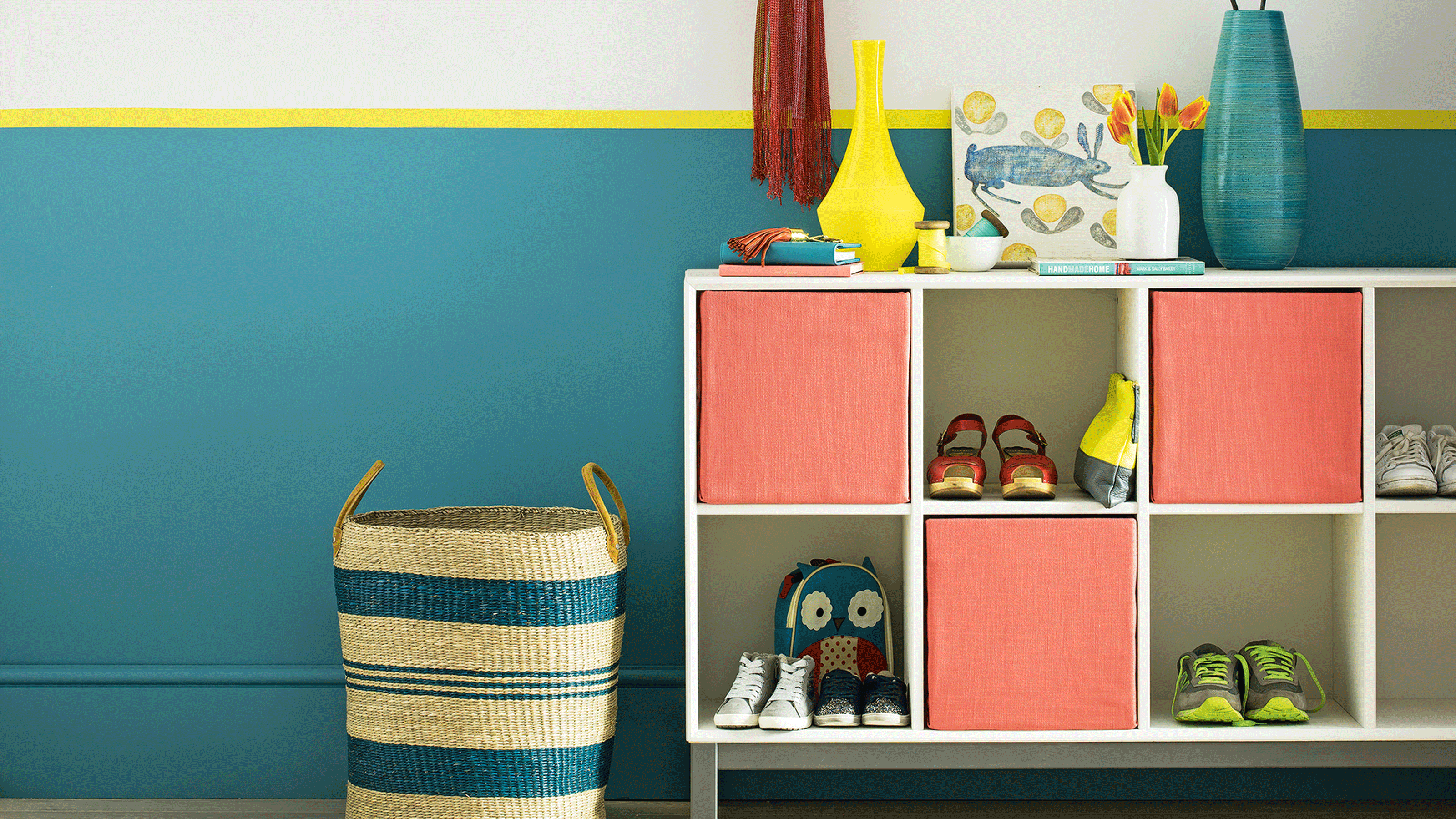
So often a dumping ground for coats, shoes, kids' school bags and pet paraphernalia, a hallway cupboard can be a nightmare to keep neat and tidy. It’s a clutter hotspot that needs organizing and quickly, too. But what’s the solution? Well, certainly not spending a fortune on ‘helpers’ you don’t actually need, we can tell you that much for free.
While it’s true that some shop-bought organisers do make life easier, one of the biggest decluttering mistakes people tend to make when home organizing is bringing more items in than they’re throwing out. We get it. Stylish hallway storage ideas are hard to resist. But trust us, you can still achieve great results without buying anything new. According to professional organizer Vicky Silverthorn, founder of You Need a Vicky, it’s kinder on both your wallet and your wellbeing:
‘Rooting around for a specific hat or pair of shoes on your way out to work… a disorganised hallway cupboard can really add to the stress of daily life. If you’re able to see clearly the clothes and items you already own, you’ll feel less tempted to go out and splurge on new items unnecessarily,' she says.
How to organise a hallway cupboard
So, how do you organise a hallway cupboard without buying anything new? It’s actually a lot easier than you might think, and keeping your items neat, tidy well-ordered will make all the difference... not just to your hallway ideas, but to your hallway decor, too. Here’s our top tips, all expert-approved, of course.
1. Start by taking everything out

As any professional will tell you, it’s almost impossible to re-organise anything in-situ – it’s a lot easier to leave items you’re not sure about where they are than it is to actively put them back. So, if you want the job done properly, everything needs to come out. Yes, everything. Take this opportunity to give your hallway cupboard a really good clean, too.
2. Get rid of stuff you don’t want or need

Nothing says warm welcome quite like an overflowing hallway cupboard…. said no one ever. The first step to creating order is undertaking a really good clear out. The cost? A little time and effort, that’s all. To help decide what stays and what goes, Vicky suggests you ask yourself the following:
‘If you’ve answered no to all three questions, it’s time to get rid. You don’t need to chuck everything out; donate old clothes, jackets and shoes to a local charity shop and sell suitable items via an online service, such as Vintage Cash Cow,' she says.
Sign up to our newsletter for style inspiration, real homes, project and garden advice and shopping know-how
An exception to bear in mind when decluttering – don’t get rid of any of your original organisational helpers at this point. You may not think your existing hallway cupboard storage ideas are doing you any favours, but a little bit of a shift around might make all the difference.
3. Make seasonal swaps
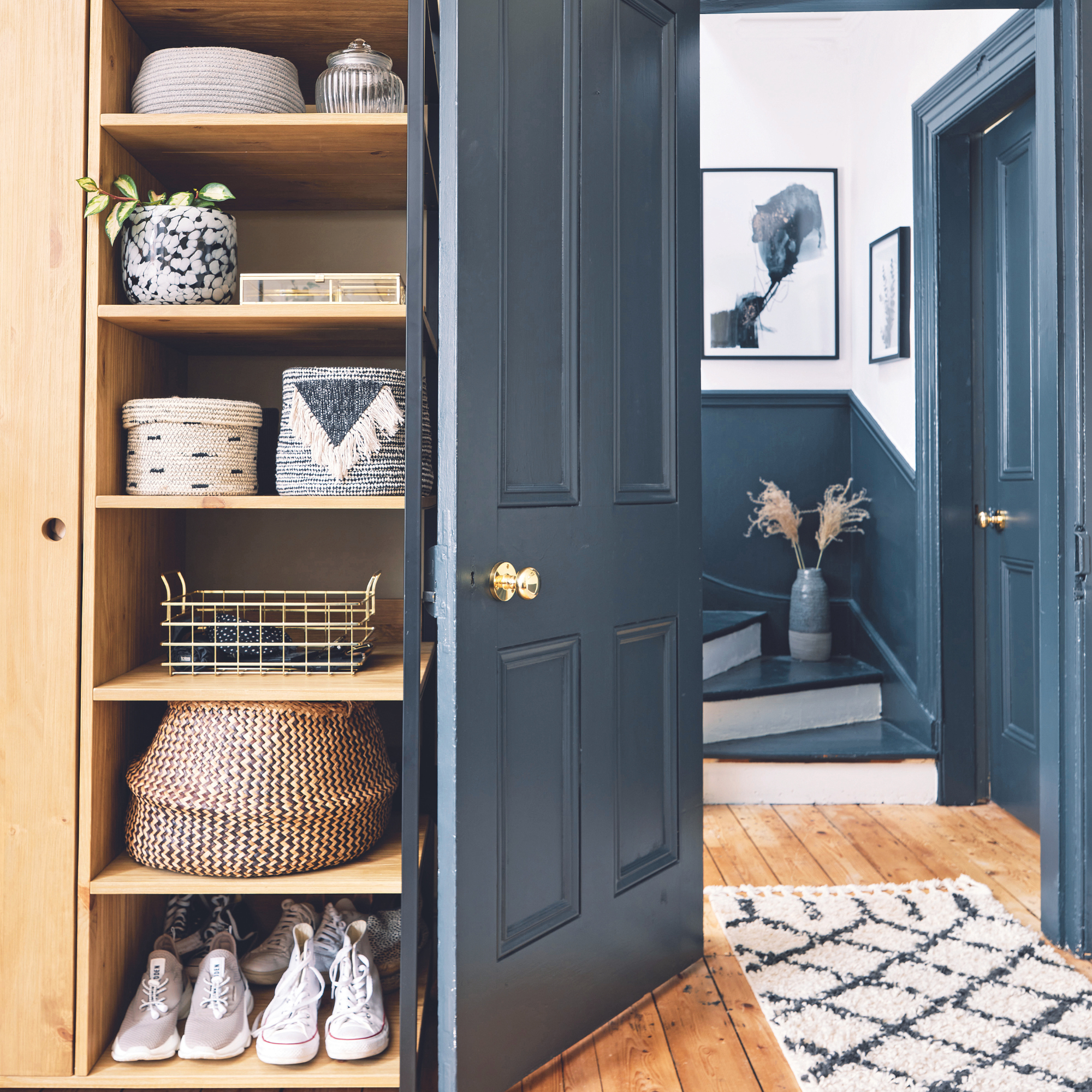
Rather than cramming everything you own into your hallway cupboard, reserve it for items you’re using regularly – think seasons. We’re going to guess you don’t wear your ski jacket in June, so you’re probably not going to miss it if you stash it somewhere else. Likewise with beach bags, sandals and picnic blankets over winter. Swap them in and out, as and when. By freeing up space like this, the need for investing in new storage disappears.
Another good tip is to organise your seasonal items again, this time by frequency of use. Picnic blankets towards the back, sandals near the front, etc. This means when it comes to grabbing something from your cupboard your most-used items will be within easy reach, saving you time and effort, says organisational expert Anna Elkington, founder of Melody Maison.
This process can also save you money in other ways – get your children to try on last year’s winter/summer gear. If it still fits, don’t buy new. Simple!
4. Repurpose old boxes to corral smaller items

Whether they’re currently residing in your hallway cupboard or somewhere else in the house, old Amazon boxes, shoeboxes, plastic takeaway containers and ‘‘bags for life’ definitely make for unnecessary clutter… unless you put them to good use, that is.
They may not be the most attractive of storage options, but they’re just as efficient as baskets and plastic containers at corralling items, particularly somewhere like a hallway cupboard that’s not on ‘show’.
‘You could always upcycle them with wrapping paper to make them more attractive if you wanted to make them more aesthetically pleasing’, says Vicky. ‘If you don’t have any boxes available, why not ask family or friends, or take a look on Facebook Marketplace? You’ll be surprised at how many people have spare ones lying around,' she adds.
5. Label up
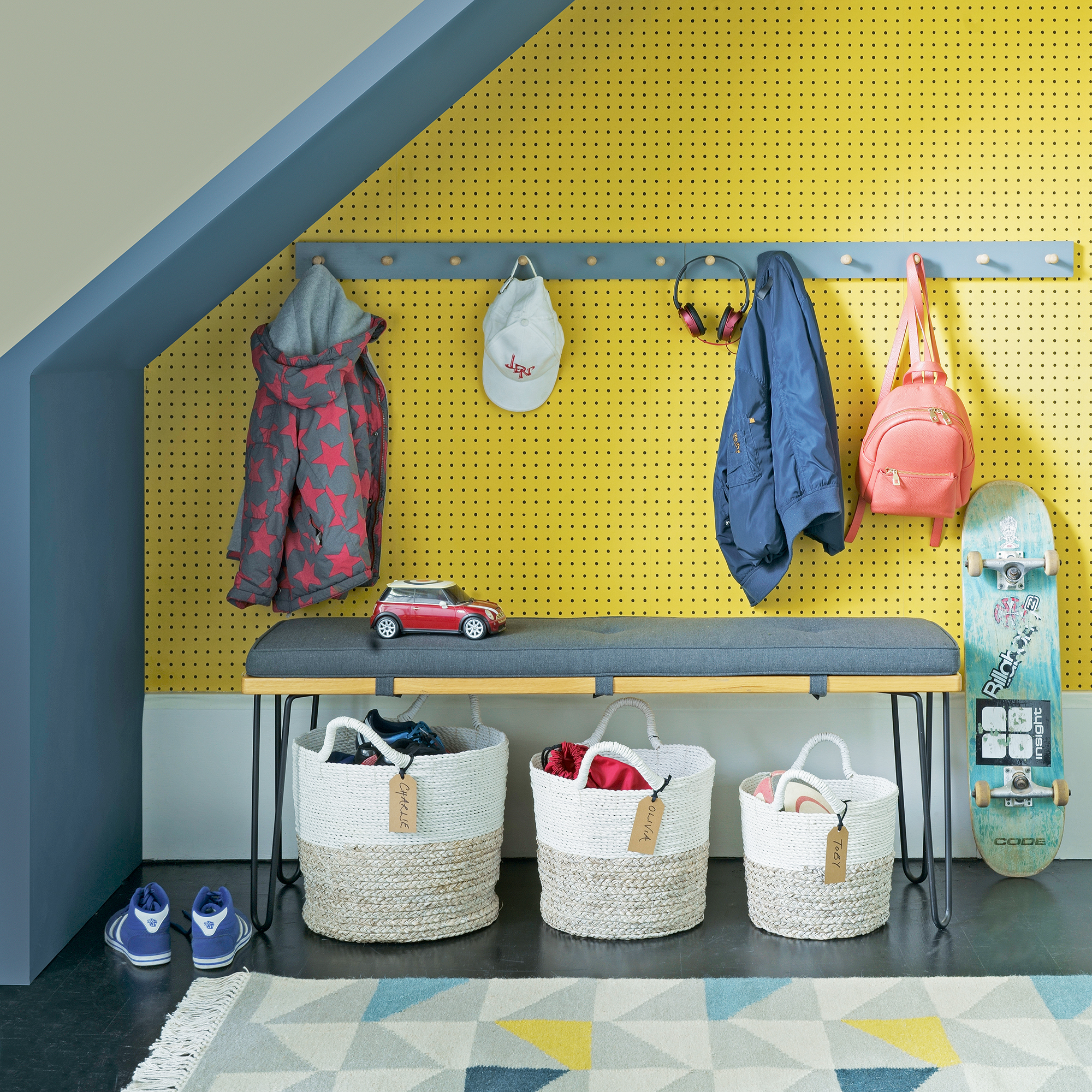
You could have all the expensive storage solutions in the world, but if no one knows what goes where, the cupboard still wind up a jumbled mess. Labeling is one of the best organisational tips out there, and you don’t need a fancy label maker to do a good job of it, either – a pen and a roll of stickies is just as effective.
‘If you’ve got multiple members in your household sharing one hallway cupboard, assign everyone their own hook, basket or shelf and encourage them to put things back in the right places. If nothing else, it’ll help get everyone out of the door on time!’ says Rebecca Knight, Deputy Editor, Digital, Ideal Home.
6. Only keep what you have room to put away
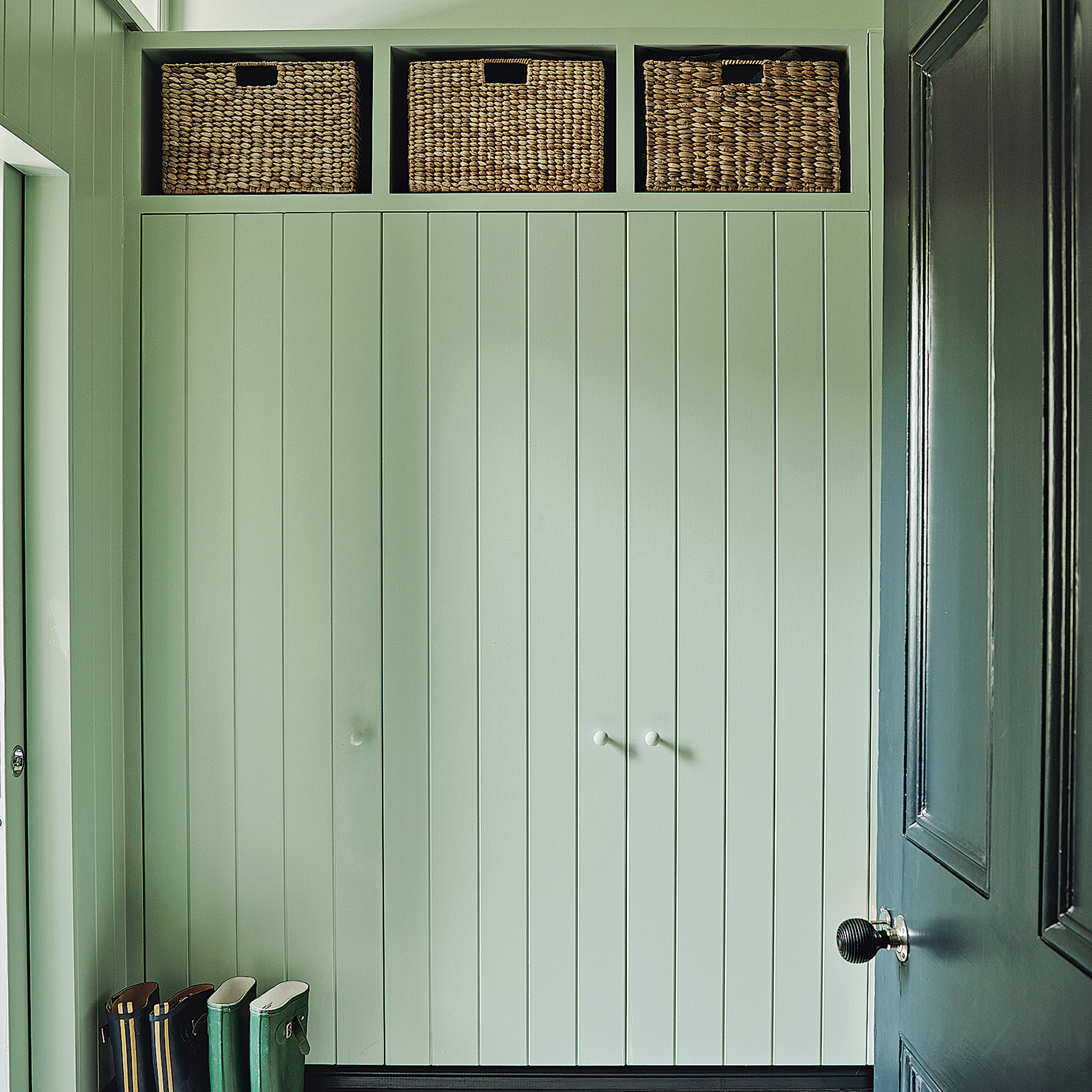
How much storage do you have in your hallway cupboard? A set of coat hooks, a single shelf? What about hallway shoe storage ideas? Rather than thinking about costly ways to increase it, think about how you could reduce what’s being stored, either through decluttering, or at least relocating somewhere else.
‘Does every item really need to stay in the hallway cupboard? For example, think about your shoe collection. It makes sense to store your everyday trainers and work shoes in there, but you could free up precious space by moving rarely-worn shoes to another location, such as under the bed or in the attic,' says Vicky.
7. Adjust shelving to create extra space

If you’ve got shelving in your hallway cupboard, think about ways you could modify it to allow for better storage. You may not have realised, but most pre-made designs are adjustable, so try that first.
Depending on what you’re trying to store, you could create height for vacuums, mops and sports equipment, cubby holes for school bags, or add in an extra shelf or two up top for stowing seasonal items.
8. Repurpose existing storage from around the house
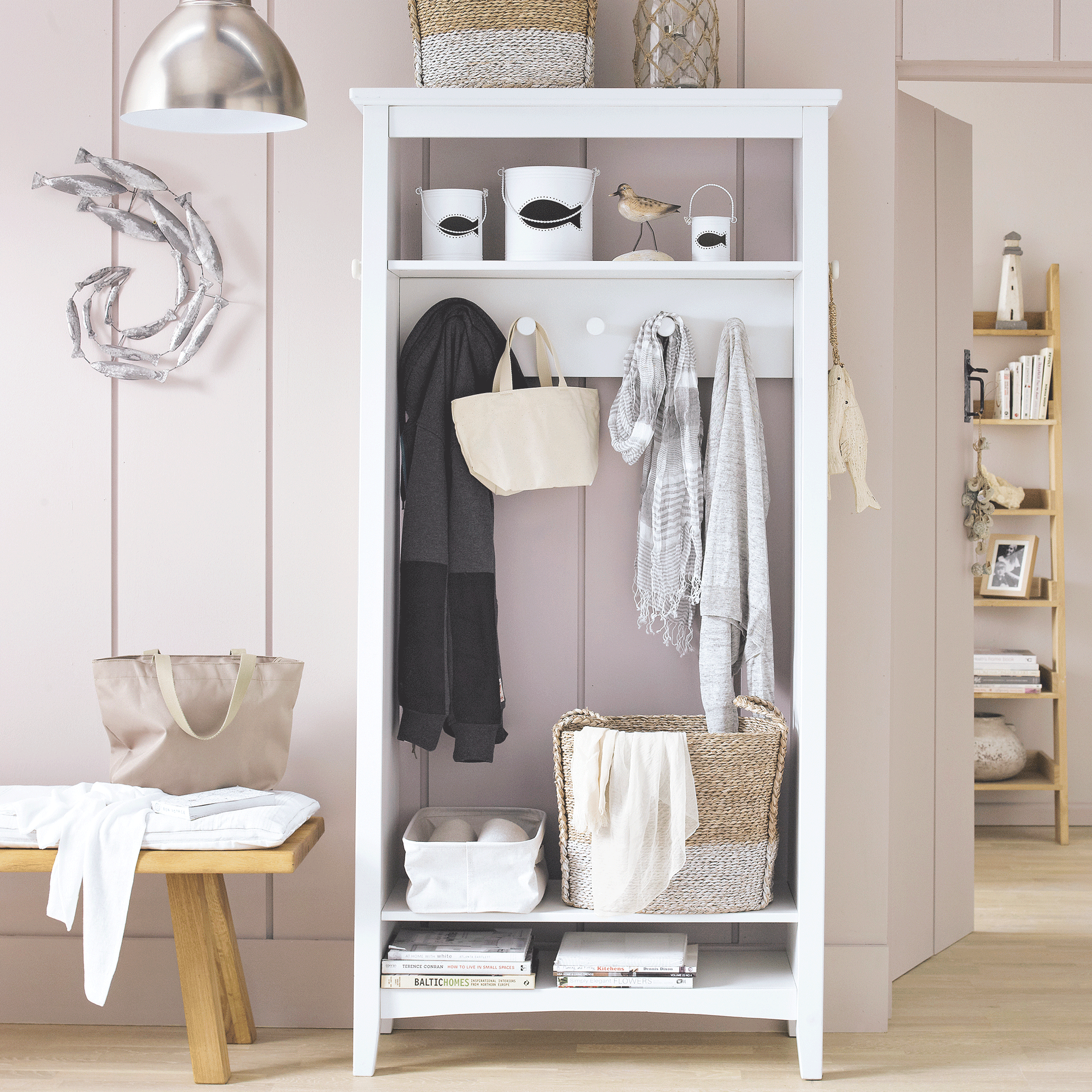
Have a think about what storage you already have around your home, and how it might work in your hallway closet. Baskets and boxes, yes, but also larger items, too. A freestanding clothing rail could be snuck in for hanging coats, along with spare hangers from your bedroom wardrobe or a small set of drawers for storing hats, scarves and gloves, for example.
'A bookshelf you no longer use could be the perfect item for storing shoes in your hallway cupboard. Simply place it at the back of your closet and stack shoes neatly on the shelves. If you have any space leftover, use it for organising bags or accessories,' says Anna Elkington.
Try not to get too hung up on aesthetics. Ok, so they might not fit as well, or be as stylish as a bespoke, built-in narrow hallway idea, but do people really take notice of the inside of a cupboard? Probably not. The benefits outweigh the costs in this case – literally.
9. Make hooks work harder

Most hallway cupboards will have some form of rack, or set of hooks inside. While they’re great for coats, you can always make them work that little bit harder, by hanging a few other items from them, too.
Brooms, mops and feather dusters are best stored vertically, and usually come with a little loop at the top. Hang a wire basket, or canvas bag filled with dusters, cloths and other cleaning essentials, and voila – multipurpose storage to suit a multipurpose coat / cleaning cupboard!
10. Reach out to friends and family
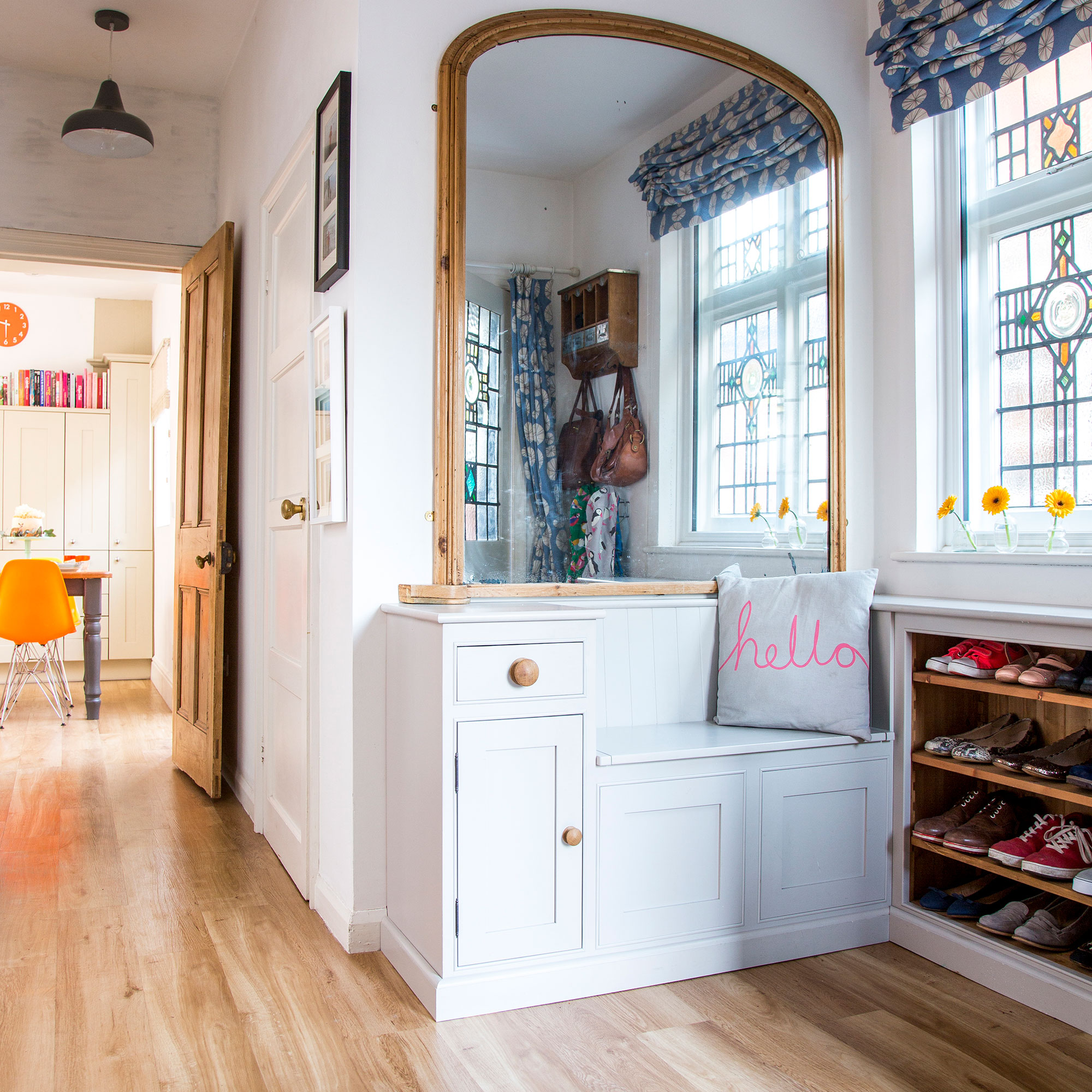
When undertaking an organisational task of any kind, don’t be afraid to ask around – particularly when you’re working to a budget. You’d be amazed at the amount of people hoarding items that they don’t need or use who’d be more than happy for you to take them off their hands… you’ll never know unless you ask.
Why not ask if they could spare some time to help you with the organizing process, too – it’ll be fun, and saves you the cost of enlisting professionals!
FAQs
What should go in a hallway cupboard?
Ideally, a hallway cupboard should be kept as a space for items for need when leaving from or returning to your house. Shoes and coats are a priority, as well as hats, umbrellas, shopping bags, dog leads, school bags, and so on.
Of course, when space is at a premium, this isn’t always possible, and you may well find other household items creeping in - vacuums, mops, cleaning supplies, and so on. That’s fine, but try and keep them grouped together, and be sure to organise by frequency of use so they're not getting in the way of those items you use everyday.
As tempting as it is to pack everything in, try not to fill your hallway cupboard to the brim, and always keep a few coat hooks spare for visitors.
How do I organise my entryway closet?
The first thing you’ll need to do is clear the clutter. Take an inventory of what you have, and the space you have to store it in. Do you have existing storage already in there? Can it be moved around or stacked, to create more floor space? You’d be amazed at what a little reshuffle can do.
Declutter thoroughly and set aside out-of-season items – rifling through stuff you don’t need is a waste of time, particularly when you’re rushing to get out the door! What’s left, group into categories; footwear, coats, bags, hats, cleaning supplies, pet paraphernalia, and so on.
Next, think about how you’re going to store these items and invest in (or repurpose) storage and organisers to suit – hooks, racks and shelving, as well as stackable containers, cardboard boxes and canvas bags are all options. When organizing a small space of any kind, always be sure to make the most of vertical space to leave floor space clear: think shelving lined with boxes or wire baskets hung on hooks are great for corralling smaller items.
Try and keep like-items grouped together as best you can, and label each storage bin or area so your organisation system sticks – be sure to inform everyone in your home of where things go, so you’re not left fighting an uphill battle!